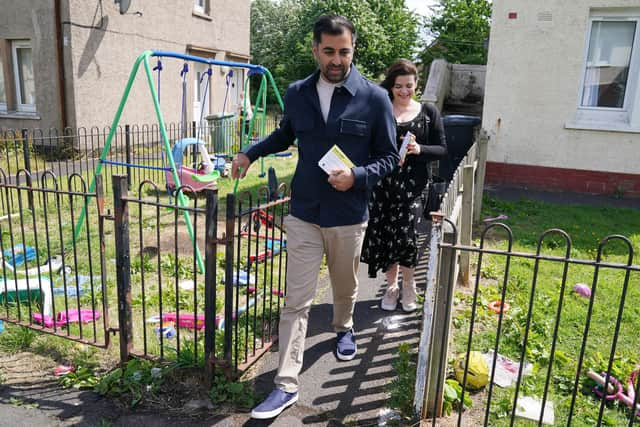SNP's control-freakery in evidence again at launch of Rutherglen and Hamilton West by-election campaign – Euan McColm
The contrast between the launches of Labour’s and the SNP’s campaigns in the Rutherglen and Hamilton West by-election was stark. Amid intense interest in the contest – thrown open after constituents recalled former MP Margaret Ferrier, elected on behalf of the SNP in 2019 and later convicted of breaking coronavirus lockdown laws – both events attracted heavy media presences.
Scottish Labour hopeful Michael Shanks stood front and centre at his launch, answering the bulk of questions from journalists. His party leader Anas Sarwar appeared perfectly relaxed to let the candidate off the leash. The launch of SNP candidate Katy Loudon’s campaign was different in style. Party leader Humza Yousaf sat in the spotlight, answering media questions while his candidate sat behind him.
Advertisement
Hide AdAdvertisement
Hide AdThese contrasting images created the impression of a confident Labour and a nervous SNP. Didn’t Yousaf trust Loudon to take questions without acting as gatekeeper? The First Minister appeared to be displaying the sort of control-freakery the SNP accuses its opponents of exercising.


In fact, there was nothing new going on. For years, the SNP has been more dictatorship than democracy. Under the leadership of Nicola Sturgeon, Cabinet Secretaries were micromanaged to within an inch of their lives by the First Minister and her deputy, John Swinney.
During the reigns of both Sturgeon and her predecessor and mentor, Alex Salmond, the membership of the SNP was seriously disempowered. The party’s conferences became less forums for debate and more public exercises in rubber-stamping policy dictated from the top.
And, since 2015, elected members have faced tough restrictions on what they can say in public. All candidates are required to agree that they will not criticise colleagues or party policy. Any disagreement is to be concealed.
There were – and still are – very good reasons for Sturgeon taking the approach she did. She and Swinney had little choice but to micromanage their ministers because so many of them were so very useless. And she was right to stifle a conference which had frequently been a forum for horse-scaring fundamentalism.


The “no dissent” clause for candidates was established when the post-2014 referendum SNP membership surge brought forward a slew of new candidates, many unknown to the leadership. Simply, the party wasn’t confident it hadn’t selected at least one or two candidates who possessed the potential to embarrass. But despite all the good, politically expedient reasons for Sturgeon’s insistence on total control, the approach began to irritate some members.
Under Salmond’s leadership, dissenting voices were few. Sturgeon, on the other hand, was heavily criticised by some factions within the party for years. Her approach to the issue of independence was routinely trashed by a vocal fundamentalist minority.
And there was criticism, too, from within the wider pro-independence movement. Activists who felt unheard and taken for granted began loudly demanding a more fundamentalist approach.
Advertisement
Hide AdAdvertisement
Hide AdThe biggest threat to the SNP is not currently the Labour party, it’s the SNP itself. For decades, a split between gradualists and Braveheart fundies rendered the party unelectable.
Nicola Sturgeon’s controlling tendencies opened up that old schism. If Humza Yousaf is to bring his party back together, he should ditch the Sturgeon style and start making his activists feel valued again.
Comments
Want to join the conversation? Please or to comment on this article.